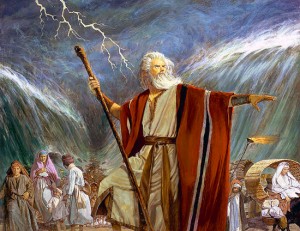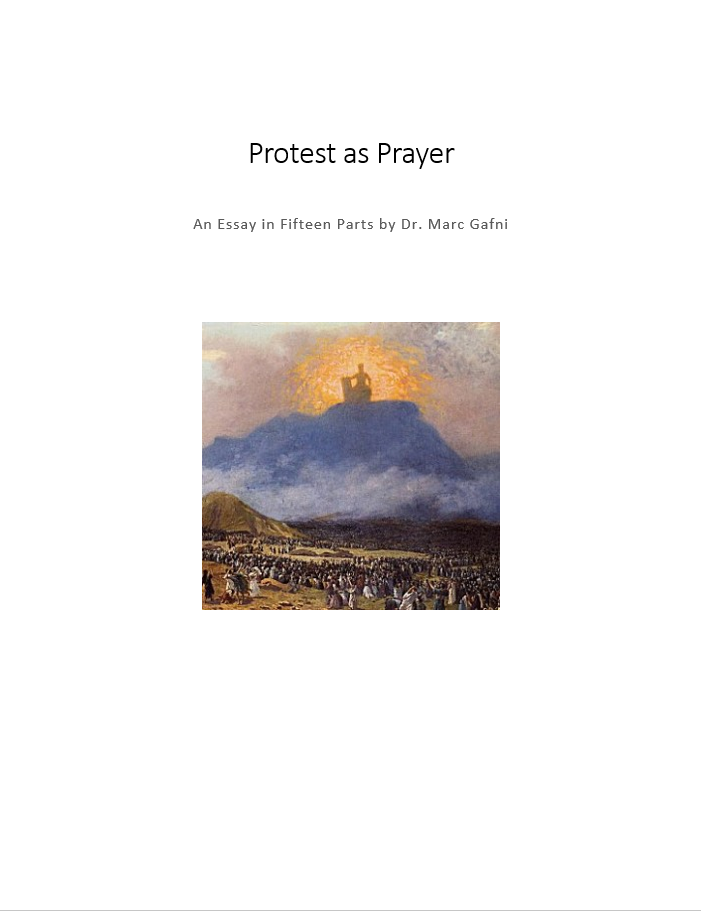Foundations for World Spirituality: Learning the Language of God (Part 5 of 5)
Editor’s note: The following essay is published as a white paper of the Center for Integral Wisdom think tank. Our Spirit’s Next Move blog is pleased to announce the paper’s availability.
 Implications: A Great Voice Which Does Not Cease
Implications: A Great Voice Which Does Not Cease
Some teachers have taught that revelation heard long ago at Mount Sinai when God spoke to human beings was an event occurring once in the lifetime of the universe, calling it according to its biblical phrasing, “A great voice which did not continue.” Again, the mystics insist that another reading is possible. In the original Hebrew, the phrase “did not continue” can paradoxically be read as “did not cease.” The voice of Sinai is accessible even after the echoes of the original revelation are long since lost in the wind. The voice of revelation has never ended.
So if the voice still continues, in what form does it live on?
It thrives in the voice of the human being who speaks from the silence. This is what I have termed Silence of Presence. When we listen deeply, we are able to uncover the God-voice within us. We become present in the silence. We are called by the presence–the God-voice within us–that wells up from the silence.
Indeed the entire cultural –spiritual enterprise of the Judaic spirit in the post biblical age is to hear the voice, even in – some would say especially in – the silence. The Biblical age ended when God stopped talking. For the Buddhist, even if one were to assume some notion of divinity – there is clearly no such absurdity as a talking God. For the Hebrew however, the essence of divinity is a talking God. Indeed the Hebrew God of the Bible talks almost endlessly, pouring out 24 books of divinely spoken or inspired word – the Hebrew Canon. What to do then when God stops talking and retreats into silence? In the interpretive reaction to this silence Judaism and early Christianity parted ways. For Christianity the cessation of speech by a talking God could only be a portent of divine withdrawal of favor. They interpreted the silence as a silence of absence. God no longer talked to the Hebrews for he had chosen a New Israel. The post prophetic Hebrews however refused to accept this understanding of God’s silence. This is the silence, not of abandonment they insisted – but of mature love. It is not silence of absence but silence of presence. Imbued with intense and profound religious passion they listened to the silence and insisted that they heard God talking. That speech is the Halachic enterprise, which insists on the radical presence of the divine in every facet of existence. It is only in this sense that we understand the Rabbinic comment after the temple’s destruction, “God’s presence in this world now rests in the four cubits of Halacha”. It is not a statement of dejection or resignation – it is rather the confident commitment of the lover.
The word Prophet in Hebrew is Navi – meaning literally – speech. Divine speech will no longer be channeled through a prophetic elite. The temple – symbol of the prophetic period – is no more. The divine voice – presence in absence – silence of presence – can be heard by all lovers who long and listen. All speech is potentially prophetic.
Learning the Language of God
Moses is the prophet par excellence and yet the Zohar suggests that Moses lives in every generation. For Moses is the model of the called human being. Indeed as the Kabbalists point out, the word Moses spelled backwards is Ha Shem, meaning “the name.” Importantly, Ha-shem in biblical Hebrew also is the most common reference to God’s name. When you respond to your call and realize your soul print, fully becoming your name, you become one with God. When Moses did this, he found his voice, he became a prophet.
In the beginning of the book of Exodus, Moses is described as stuttering, unable to speak clearly. He says, “Who am I to go to Pharaoh, I am not a man of words.” And yet by the end of the five books, Moses gives great and powerful speeches to Pharaoh, to the people, even to God. The beginning of the last biblical book, called Deuteronomy (which in Hebrew is Devarim, meaning “words”) opens with the sentence, “And these are the words that Moses spoke.” Moses, who in the book of Exodus says, “I am not a man of words,” has become the ultimate man of words. He now speaks the word of God. When we find our voice, when we connect with our inner soul print, then divine energy courses through us and we are able, each in our own way, to speak the word of God.
One of the great questions of biblical myth is how one can claim that there are five books of the bible. “Isn’t the bible the word of God?” ask the masters. “And isn’t the fifth book of biblical myth, Deuteronomy, actually comprised of the words of Moses, for does not the book begin, “These are the words which Moses spoke’”? The answer is clear: When Moses finds voice, finds vocation, then he hears God speaking through him. In the language of the myth masters, “The shechina” — divine presence ”–speaks through the throat of Moses.” The voice of God and the voice of Moses are one.
The artist, writer, creator, business man, doctor, and gardener, will all tell you that at the times when they feel merged with their calling, when they’re no longer standing on the outside performing a task but standing on the inside, flowing with their action, something higher speaking through them. I know that when I teach, often I get lost and I feel the words flowing by themselves, shaping and forming sentences almost magically before me. It is in these moments that we access our soul print and realize fully our unique voice in this world. At those moments of actualized soul print, our words are the words of God. We have learned to speak the language of God.
This post is part of a series of posts “Foundations for World Spirituality: Learning the Language of God” which begins with Part 1. For Part 2, Part 3, and Part 4, follow the links.

 By
By  “As the Kabbalists point out, the word Moses spelled backwards is Ha Shem, meaning ‘the name.’ Importantly, Ha-shem in biblical Hebrew also is the most common reference to God’s name. When you respond to your call and realize your soul print, fully becoming your name, you become one with God. When Moses did this, he found his voice, he became a prophet.”
“As the Kabbalists point out, the word Moses spelled backwards is Ha Shem, meaning ‘the name.’ Importantly, Ha-shem in biblical Hebrew also is the most common reference to God’s name. When you respond to your call and realize your soul print, fully becoming your name, you become one with God. When Moses did this, he found his voice, he became a prophet.”
